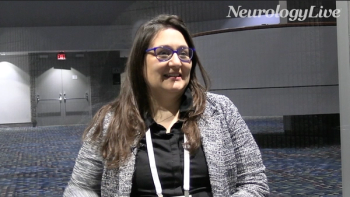
Community Disadvantage Linked to Increased Motor Symptom Severity in Parkinson Disease
Key Takeaways
- Community disadvantage is linked to increased motor symptom severity and disability in PD and atypical parkinsonisms, suggesting modifiable social and environmental factors.
- The study involved 565 participants, with community disadvantage associated with higher MDS-UPDRS III scores and Hoehn and Yahr stages.
Findings from a recently published study may offer clinicians a deeper understanding of the complex relationship between Parkinson disease biology and social or environmental factors.
In a recently published study in Neurology Clinical Practice, results revealed that community disadvantage was associated with worse motor symptom severity and motor disability in patients with Parkison disease (PD) and atypical parkinsonisms. These findings suggest that there may be modifiable social and environmental factors that can impact symptom severity in these syndromes.1
Among a total of 565 participants (PD, n = 458 PD; atypical parkinsonisms, n = 107; mean age, 69 years; men, 65%) included in the study, the mean disease duration was 7 years, and the mean Movement Disorders Society Unified PD Rating Scale part III (MDS-UPDRS III) score was 30.4. In the combined PD plus atypical parkinsonisms group, researchers reported that worse community disadvantage was positively associated with MDS-UPDRS III score following adjustment for age, sex, disease duration, and education years (β = 1.58 [0.62], P = .01).
“If environmental exposures or other social determinants of health in these communities are worsening PD motor symptoms, programs to address these at the individual and community levels could improve quality of life, including motor outcomes,” lead author Emily J. Hill, MD, and colleagues wrote.1 “Our findings also suggest a vulnerable subpopulation of PD and atypical parkinsonisms in disadvantaged communities. Currently, most people with PD seen in academic movement disorder clinics are from well-resourced neighborhoods, but our findings suggest that people with PD in disadvantaged neighborhoods have more challenges in motor symptoms and may need help reaching subspecialty care.”
Investigators defined community disadvantage in the current study utilizing the Material Community Deprivation Index. In a cohort that includes both patients with PD and atypical parkinsonisms, known as the Cincinnati Cohort Biomarkers Program, researchers assessed for associations between community disadvantage and motor symptom severity measured by MDS-UPDRS III, motor disability measured by Hoehn and Yahr stage (HY), and cognition measured by Montreal Cognitive Assessment (MoCA). Authors noted that they considered age, sex, disease duration, levodopa equivalent daily dose, education years, and race as covariates in multiple regression analyses.
Among 479 patients who had taken levodopa, most were assessed during the ON state of the disease (80%). Additionally, most patients were HY stage 2 (75%) and were from urban areas (88%). Furthermore, the mean education years of the participants were 17, and most were nondemented (mean MoCA, 25/30). In the group of patients with atypical parkinsonism, diagnoses included dementia with Lewy bodies (n = 33), progressive supranuclear palsy (n = 30), multiple system atrophy (n = 14), corticobasal syndrome (n = 4), hydrocephalic parkinsonism (n = 2), or unspecified atypical parkinsonism (n = 24).
Additional findings showed that worse community disadvantage was also positively associated with an increased risk of higher HY stage following adjustment for age, sex, and disease duration (OR, 1.27 [1.01–1.58], P = .04). Notably, race and levodopa equivalent daily dose (LEDD) were not significantly associated with either outcome in univariable analyses, and authors excluded them from the final models. Authors also noted that the MoCA (n = 400) also was not significantly associated with community disadvantage (adjusted for age, sex, and disease duration, β = −3,577.2, P = .32).
In only the group of patients with PD, results demonstrated that worse community disadvantage was positively associated with MDS-UPDRS III score (β = 1.72 [0.61], P = .01) and HY stage (OR, 1.32 [1.01–1.71], P = .04) following adjustment for age and disease duration. Among the patients in the atypical parkinsonism only group, findings indicated that community disadvantage was not significantly associated with MDS-UPDRS III (β = 2.27 [1.82], P = .22) or HY stage (OR, 0.75 [0.39–1.44], P = .39).
All told, the study did not include direct assessment of barriers to receiving subspecialty care and included mostly non-Hispanic White patients with PD. Authors noted that the understanding of cultural and environmental factors that contribute to the low numbers of patients with PD who belong to racial and ethnic minorities may require further study in a more racially diverse patient population. Researchers also noted that these analyses from the cohort and other prior cohorts2 could be underpowered to detect symptom differences by race.
"Screening for PD and parkinsonism in underrepresented populations is critically needed. Additional studies into mechanisms that link environmental factors and disease pathophysiology are needed. This includes studying the impact of specific exposures and how they change over time (e.g., possible epigenetic modification)," Hill, assistant professor of clinical neurology and rehabilitation medicine at University of Cincinnati College of Medicine, and colleagues noted.1 "This is a promising area of research in PD and parkinsonism with the potential to identify specific interventions to greatly improve quality of life in people with PD and parkinsonism."
REFERENCES
1. Hill EJ, Marcucci SB, DeLano K, Abanto J, Sawyer RP, Marsili L, Duque KR, Sun Q, Woo D, Langefeld CD, Hall DA, Skirpan D, Paredes NC, Spikes C, Bajaj DA, Gregor N, Stivers S, Mahajan A, Woo JG, Espay AJ. Community Disadvantage Is Associated With More Severe Motor Symptoms in Parkinson Disease. Neurol Clin Pract. 2025 Aug;15(4):e200506. doi: 10.1212/CPJ.0000000000200506. Epub 2025 Jun 26. PMID: 40584637; PMCID: PMC12204768.
2. Parkinson Progression Marker Initiative. The Parkinson Progression Marker Initiative (PPMI). Prog Neurobiol. 2011 Dec;95(4):629-35. doi: 10.1016/j.pneurobio.2011.09.005. Epub 2011 Sep 14. PMID: 21930184; PMCID: PMC9014725.
Newsletter
Keep your finger on the pulse of neurology—subscribe to NeurologyLive for expert interviews, new data, and breakthrough treatment updates.































